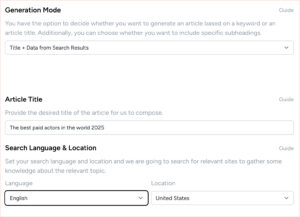Imagine diving into a vast ocean where each droplet holds a piece of crucial information, guiding you toward a treasure trove of knowledge. This is the world of domains and databases, an intricate and essential aspect of modern technology.
In the “Ultimate Guide to Domains: Understanding Databases,” you will embark on a journey that demystifies the complexities of data management.
You’ll uncover the foundational concepts, explore various types of databases, and learn how to effectively manage and safeguard your data.
Whether you’re a seasoned IT professional seeking to refine your skills or a curious newcomer eager to grasp the basics, this guide is tailored to equip you with the insights and tools you need.
By the end, you’ll not only understand the pivotal role databases play in today’s digital landscape but also be empowered to harness their full potential in your projects and enterprises.
Importance of Domains in Databases
Domains in databases play a crucial role in defining the permissible values that each column can contain, ensuring data integrity and consistency. By establishing domains, you set clear boundaries on what data can be entered, effectively reducing errors and inconsistencies.
Domains act as constraints that enforce rules, such as:
- Data type
- Length
- Range
This enhances the reliability of your database.
You want control over your data, and domains give you that power. They prevent invalid entries and maintain the integrity of your database by rejecting data that doesn’t meet specified criteria. This level of precision is essential for any system that depends on accurate and reliable data.
Moreover, constraints linked to domains simplify data validation processes. Instead of manually checking each entry, the database automatically ensures compliance with the rules you’ve set.
This automation:
- Saves time
- Reduces human error
- Makes your database more robust and trustworthy
Types of Database Domains
You’ll encounter various types of database domains that help structure and control the data within your system. By understanding these, you can enforce constraints and maintain data integrity effectively.
Numeric Domain:
- Includes integers and floating-point numbers.
- Use this domain to store and manage numerical data precisely.
String Domain:
- Handles text data.
- Ensures you can capture names, addresses, and descriptions accurately.
Date/Time Domain:
- Essential for managing temporal data like timestamps and schedules.
- Ensures consistency and order.
Enumerated Domain:
- Allows predefined values.
- Maintains strict data constraints and prevents invalid entries.
Composite Domain:
- Combines multiple data types into a single, cohesive structure.
- Enhances data integrity by grouping related information.
Each type of domain brings unique strengths, enabling you to tailor your database to your specific needs, ensuring data remains accurate, reliable, and secure.
Primary Key Domain Explained
Every database relies on a primary key to uniquely identify each record and ensure efficient data retrieval.
By defining a primary key, you establish a crucial domain in your database that enforces uniqueness and prevents duplicate entries. This key acts as a fundamental constraint, maintaining data integrity across your tables.
When you choose a primary key, you’re not just picking any field.
You need to ensure it’s a unique identifier, often:
- An ID number
- A combination of fields that guarantees no two records are alike
This decision empowers you to effectively manage and retrieve data, giving you control over your database’s structure.
Primary keys also play a critical role in defining relationships between tables.
Remember, without a robust primary key domain, your database’s integrity can be compromised. So, make thoughtful choices, apply necessary constraints, and keep your data organized and reliable.
Foreign Key Domain Usage
Foreign keys are essential for establishing and maintaining relationships between tables in your database.
They ensure that your data remains consistent and reliable by linking records across different tables.
When you define a foreign key, you’re creating a domain that mirrors the primary key domain of another table, enforcing referential integrity.
This means that every value in your foreign key field must exist in the referenced primary key field.
You’ve got the power to define constraints that maintain the integrity of these relationships.
For example, you can set up cascading updates or deletions to automatically mirror changes in the linked tables, reducing the risk of orphaned records.
This control ensures your database remains accurate and functional.
By leveraging foreign key domains and constraints, you can build a robust database structure that supports complex queries and reliable data management.
So, take charge of your database relationships and ensure data integrity with well-defined foreign keys.
Domain Constraints in Databases
In database design, domain constraints play a crucial role in defining the permissible values that can be stored in a column. By setting these constraints, you ensure that the data adheres to specific rules, thereby maintaining consistency and accuracy.
Domains act as a blueprint, guiding what kind of data can occupy a given field. This means you can prevent invalid data entries, enhancing the overall integrity of your database.
You’re in control when you implement domain constraints. For instance, you can restrict a column to accept only:
- Numerical values
- Dates within a certain range
By doing so, you eliminate the risk of errors that could compromise your data’s integrity. Constraints are your best friend when it comes to maintaining a clean and reliable database.
You’ll find that using domain constraints not only:
- Enforces data quality
- Simplifies data management
You’ll spend less time correcting mistakes and more time leveraging accurate data for your needs.
Domain Integrity in Database Design
Ensuring domain integrity in your database design guarantees that each piece of data fits within its defined boundaries and adheres to specific rules.
You achieve this by establishing clear domains and constraints.
Domains define the permissible values for a data field, while constraints enforce these limits, ensuring the integrity of your data.
By setting up proper constraints, you prevent invalid data from entering your system.
For example, if a domain specifies that an age field must be between 0 and 120, a constraint ensures values outside this range are rejected. This not only keeps your data consistent but also enhances its reliability and accuracy.
To maintain control over your database:
- Consistently review and update your domains and constraints as your data requirements evolve.
- This proactive approach helps avoid data anomalies and maintains domain integrity, ensuring your database remains a trustworthy resource.
By focusing on these elements, you create a robust foundation for managing your data efficiently.
Understanding Domain Data Types
Understanding domain data types is crucial because they define the nature and format of the data that can be stored in each field of your database.
By mastering domain data types, you gain control over how data is:
- input,
- stored,
- and retrieved.
Domains dictate what kind of values are permissible, ensuring that the data aligns with your specific requirements.
You can set constraints to enforce rules, like ensuring:
- a date field only contains valid dates,
- or a numeric field only holds numbers within a certain range.
Constraints are essential for maintaining data integrity. They prevent invalid or inappropriate data from corrupting your database.
For example, setting a domain for an email field ensures that only properly formatted email addresses get stored.
This not only enhances data quality but also boosts the reliability of your database operations.
Understanding and properly implementing domain data types and constraints empower you to maintain the highest levels of data integrity and consistency across your database.
Domain Equivalence in Databases
In database management, domain equivalence ensures that different fields sharing the same type of data are consistent and comparable. By enforcing domain equivalence, you maintain the integrity of your data across various tables.
It means that if you have a field for email addresses in multiple tables, all of them will follow the same format and constraints.
You’ll want to define domains with specific constraints to avoid any data inconsistencies. For instance, setting a domain constraint for email addresses ensures they adhere to a standard format, reducing errors.
This way, you can confidently compare and query data knowing it’s uniform.
By focusing on domain equivalence, you gain more control over your database’s integrity. You avoid the pitfalls of mismatched data types and formats, making your database robust and reliable.
Remember, a consistent approach to domains not only simplifies data management but also enhances the overall reliability of your database system.
Domain Cardinality in Relation to Databases
Understanding domain cardinality is crucial because it defines the permissible number of unique values a field can hold in your database.
When you grasp this concept, you gain better control over your data’s integrity and how constraints shape your database’s functionality.
Domains set the foundation by specifying allowed data types and ranges, but cardinality refines it further by limiting entries.
For instance, if you’re managing a database of employees, setting a cardinality constraint on a ‘Department’ field ensures that only valid departments are assigned. This maintains data integrity by preventing erroneous or duplicate entries.
By leveraging domain cardinality, you enforce rules that keep your database consistent and reliable.
You can avoid data anomalies and ensure that each field holds only appropriate and unique values.
This meticulous control over your database structure empowers you to maintain high standards of data quality and reliability, ultimately giving you the confidence that your database operates smoothly and accurately.
Domain Key Constraints Overview
To maintain robust database integrity, understanding domain key constraints is essential.
Domains define the permissible values an attribute can take, ensuring data consistency and quality.
Constraints, on the other hand, enforce rules on the data within these domains, preventing errors and maintaining integrity.
When you apply key constraints, you’re setting specific criteria for your data. For instance:
- Primary Key Constraint: Ensures that each record in a table is unique and identifiable.
- Foreign Key Constraint: Maintains referential integrity between tables.
These constraints are critical in:
- Avoiding duplicate records.
- Ensuring relationships between tables remain intact.
By mastering domain key constraints, you gain control over your database’s structure and functionality. You’ll:
- Prevent data anomalies.
- Enforce data integrity.
- Streamline data management.
Remember, constraints aren’t limitations; they’re tools that give you the power to maintain a clean, efficient, and reliable database. Use them wisely to ensure your data remains consistent and trustworthy.
Optimizing Database Domains
To maximize your database’s performance, you need to optimize its domains effectively.
Start by defining clear domains for every field, ensuring each value adheres to strict rules. This boosts data integrity and makes your database more reliable.
Implement constraints to maintain consistent and accurate data. For instance, use CHECK constraints to restrict values within specific domains, making sure they meet predefined criteria.
Leverage NOT NULL constraints to prevent empty fields, ensuring all necessary data is present.
Optimizing domains also involves normalizing your database to eliminate redundancy and improve efficiency. By breaking data into related tables, you maintain data integrity and streamline queries.
Regularly review and update your domain definitions and constraints to adapt to changing requirements and keep your database optimized.
Remember, a well-optimized database with clearly defined domains and robust constraints not only enhances performance but also gives you greater control over your data management processes.
How do domains interact with database indexing?
Domains interact with database indexing by providing a structured way to define allowable values for a database column.
This helps in ensuring data integrity and consistency.
By setting up domains, you can control what values can be stored in specific columns, which in turn aids in efficient indexing.
This control over data input through domains plays a crucial role in optimizing the performance and organization of your database.
What are the best practices for naming domains in a database schema?
When naming domains in a database schema, you should stick to clear, descriptive names that reflect the data they represent.
Avoid generic terms and abbreviations that might cause confusion later on.
Consistency is key for easy understanding and maintenance.
Make sure your naming conventions are well-documented and followed by all team members.
By following these best practices, you can ensure a well-organized and easily manageable database schema.
How can domains be version-controlled in a collaborative database environment?
To version-control domains in a collaborative database environment, you should establish clear guidelines for naming conventions and updates.
Utilize a version control system like Git to track changes and manage conflicts effectively.
Regularly communicate with your team to ensure everyone follows the agreed-upon processes.
By implementing these strategies, you can maintain organization and consistency in your database schema.
Conclusion
In conclusion, mastering the concepts of database domains is crucial for efficient database design and management.
By understanding the different types of domains, key constraints, and data types, you can optimize your database structure for better performance and data integrity.
Key considerations include:
- Domain cardinality
- Constraints
These elements are essential to ensure your database operates smoothly and effectively.
Final tips:
- Keep practicing
- Explore the intricacies of domains
By doing so, you will become a proficient database administrator.





